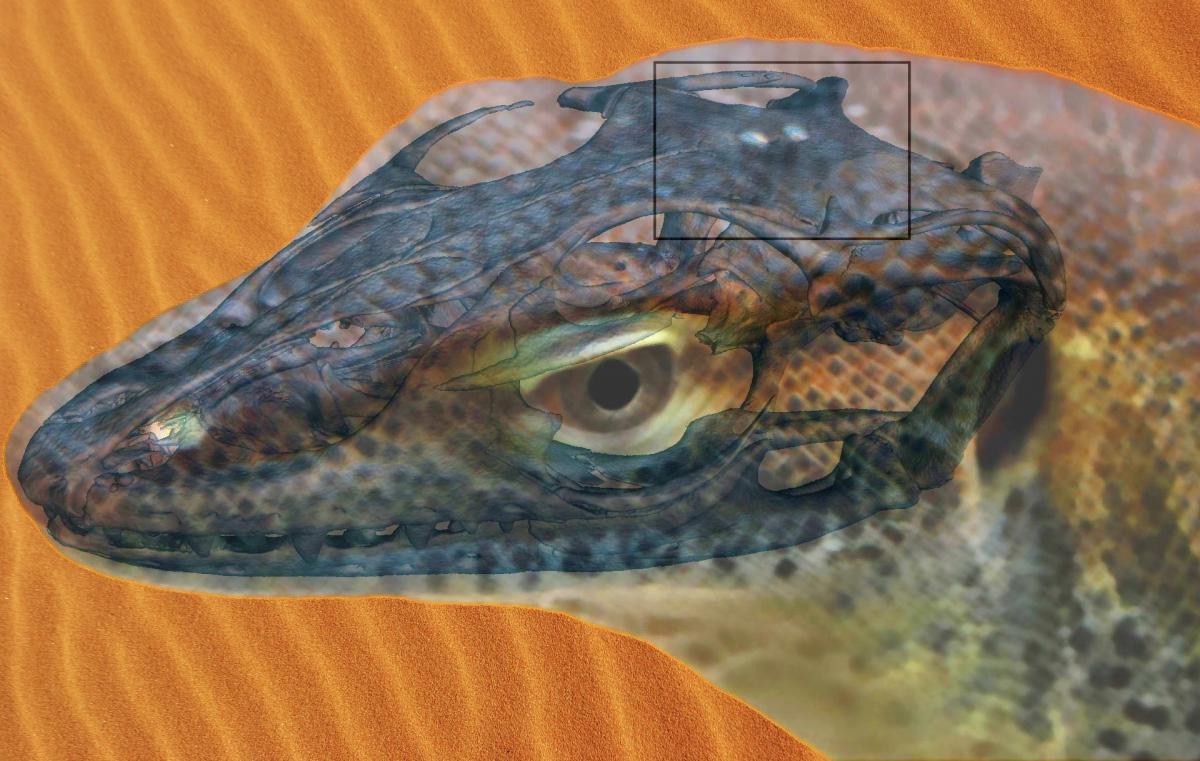Eocene Monitor Lizard Had Four Eyes: Study

According to a new study, Saniwa ensidens — an extinct monitor lizard that lived in what is now Wyoming 51-49 million years ago (Eocene epoch) — had four eyes, a first among known jawed vertebrates. The third and fourth eyes refer to pineal and parapineal organs, eye-like photosensory structures on the top of the head that play key roles in orientation and in circadian and annual cycles.
“The photosensitive pineal organ is found in a number of lower vertebrates such as fishes and frogs. It’s often referred to as the ‘third eye’ and was widespread in primitive vertebrates,” said lead author Dr. Krister Smith, a researcher with the Senckenberg Research Institute in Germany.
“On the one hand, there was this idea that the third eye was simply reduced independently in many different vertebrate groups such as mammals and birds and is retained only in lizards among fully land-dwelling vertebrates.”
“On the other hand, there was this idea that the lizard third eye developed from a different organ, called the parapineal, which is well developed in lampreys. These two ideas didn’t really cohere.”
“By discovering a four-eyed lizard — in which both pineal and parapineal organs formed an eye on the top of the head — we could confirm that the lizard third eye really is different from the third eye of other jawed vertebrates,” he said.
Dr. Smith and co-authors got the idea that the fossilized lizards might have a fourth eye after other experts came to contradictory conclusions about where the lizard’s third eye was located.
“The first question to explore the ‘wacky’ idea of a lizard with four eyes was, does this unusual feature occur in more than one individual of the same age?” Dr. Smith said.
“We turned to museum specimens collected nearly 150 years ago at Grizzly Buttes as part of the Yale College Expedition to the Bridger Basin, Wyoming. And, it turned out that the answer to their question was yes.”
“CT scans showed that two different individuals of Saniwa ensidens (a fossil sister lineage of the extant genus Varanus) had spaces where a fourth eye would have been, which I certainly did not expect.”
The evidence confirms that the pineal and parapineal glands weren’t a pair of organs in the way that vertebrate eyes are.
The third eye of lizards evolved independently of the third eye in other vertebrate groups, according to the team.
“While there’s nothing mystical about the pineal and parapineal organs, they do enable extraordinary abilities,” Dr. Smith said.
“For instance, they allow some lower vertebrates to sense the polarization of light and use that information to orient themselves geographically.”
“Scientists still have a lot to learn about the evolution of these organs and their functions in living animals.”
The findings were published in the April 2, 2018 issue of the journal Current Biology.
_____
Krister T. Smith et al. 2018. The Only Known Jawed Vertebrate with Four Eyes and the Bauplan of the Pineal Complex. Current Biology 28 (7): 1101-1107.e2; doi: 10.1016/j.cub.2018.02.021
Source: www.sci-news.com








